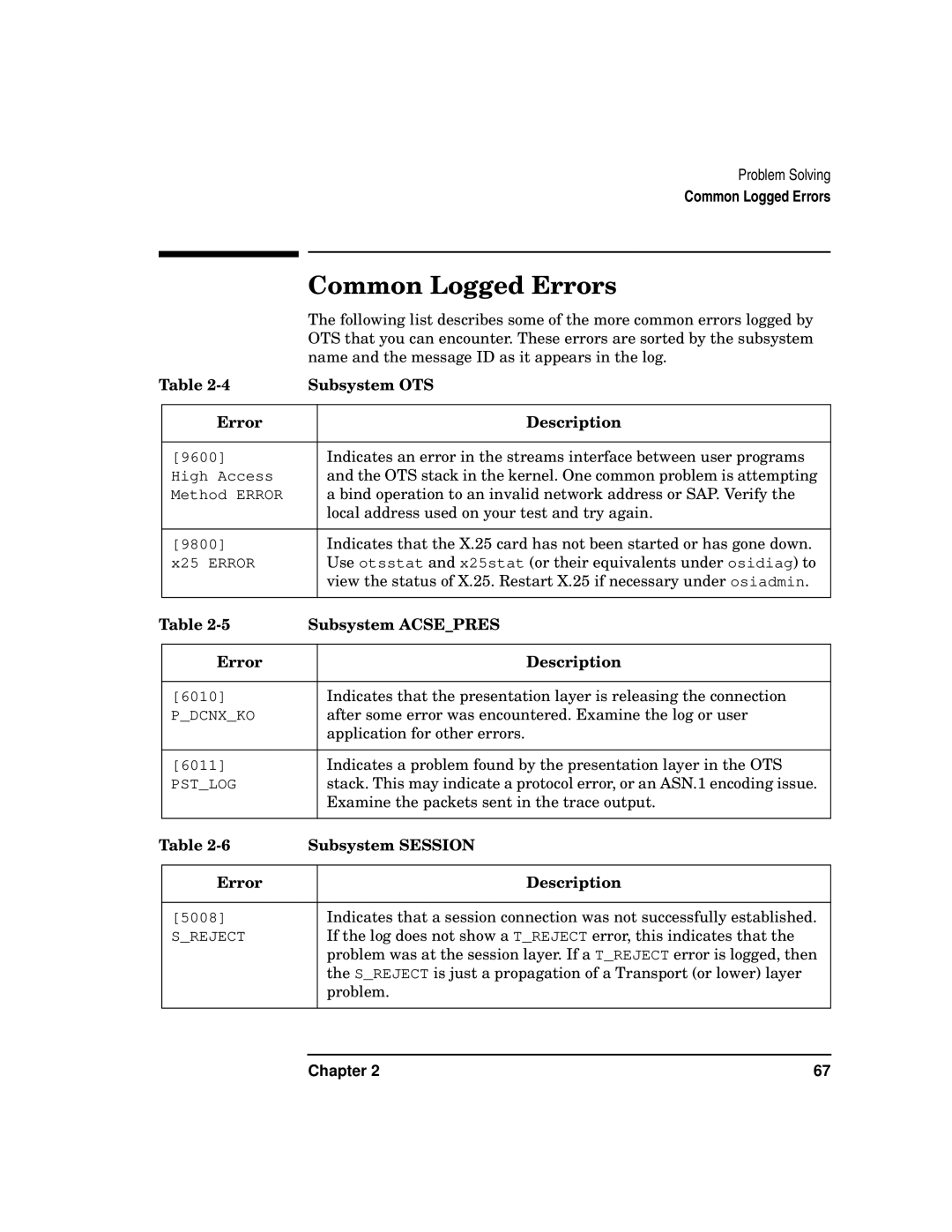
Problem Solving
Common Logged Errors
|
| Common Logged Errors | |
|
| The following list describes some of the more common errors logged by | |
|
| OTS that you can encounter. These errors are sorted by the subsystem | |
|
| name and the message ID as it appears in the log. | |
Table | Subsystem OTS | ||
|
|
|
|
| Error |
| Description |
|
|
|
|
| [9600] |
| Indicates an error in the streams interface between user programs |
| High Access |
| and the OTS stack in the kernel. One common problem is attempting |
| Method ERROR |
| a bind operation to an invalid network address or SAP. Verify the |
|
|
| local address used on your test and try again. |
|
|
|
|
| [9800] |
| Indicates that the X.25 card has not been started or has gone down. |
| x25 ERROR |
| Use otsstat and x25stat (or their equivalents under osidiag) to |
|
|
| view the status of X.25. Restart X.25 if necessary under osiadmin. |
|
|
|
|
Table | Subsystem ACSE_PRES | ||
|
|
|
|
| Error |
| Description |
|
|
|
|
| [6010] |
| Indicates that the presentation layer is releasing the connection |
| P_DCNX_KO |
| after some error was encountered. Examine the log or user |
|
|
| application for other errors. |
|
|
|
|
| [6011] |
| Indicates a problem found by the presentation layer in the OTS |
| PST_LOG |
| stack. This may indicate a protocol error, or an ASN.1 encoding issue. |
|
|
| Examine the packets sent in the trace output. |
|
|
|
|
Table | Subsystem SESSION | ||
|
|
|
|
| Error |
| Description |
|
|
|
|
| [5008] |
| Indicates that a session connection was not successfully established. |
| S_REJECT |
| If the log does not show a T_REJECT error, this indicates that the |
|
|
| problem was at the session layer. If a T_REJECT error is logged, then |
|
|
| the S_REJECT is just a propagation of a Transport (or lower) layer |
|
|
| problem. |
|
|
|
|
Chapter 2 | 67 |
